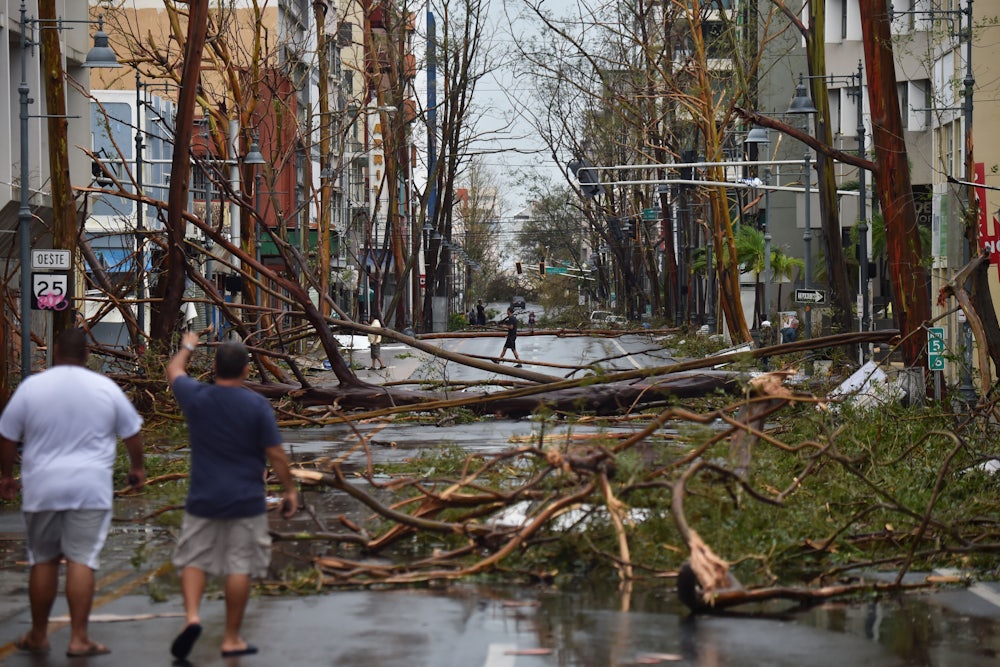On September 20, 2017, Hurricane Maria, which had already devastated the island of Dominica, hit Puerto Rico as a Category 4 hurricane with winds reaching 155 miles per hour. The island had seen other storms—including Hurricane Irma weeks earlier. But Maria wiped out not just homes and buildings but also the island’s power and communications grid. Between the grid damage and a patchy governmental response, fatalities continued to accumulate long after the winds themselves had faded.
Glorynel Ojeda Matos studies sustainability. And when hurricanes ravaged her home in the fall of 2017, she knew Puerto Rico would never be the same.
“Hurricane Maria happened in September, but before that, we had Irma,” Ojeda Matos said. “It left so many people without electricity, so it helped us to be more prepared. We knew we’d have to count on the generator. We were close to water, but we needed water. We knew that if Maria were to hit, we would say, ‘OK. This will be worse than what happened with Irma.’”
It was. Although Irma caused some damage to the island, Maria debilitated it.
“When we opened the door the next morning,” Ojeda Matos remembers, “everything was destroyed. Totally. All of the vegetation. The streets were closed. The electrical grid was down. I grew up in Puerto Rico, so I’ve seen hurricanes my whole life. But I’ve never seen anything like Maria.”
The emergency response was slow and aid from the government slower. According to Federal Emergency Management Agency documents, 1.6 million meals were delivered to Puerto Rico within nine days of Maria. Under 3 million liters of water were delivered, along with 5,000 tarps. By comparison, victims of Hurricane Harvey, which hit Texas and Louisiana in 2017, received 5.1 million meals, 4.5 million liters of water, and 20,000 tarps nine days after the storm.
Ojeda Matos and her family had a decision to make. Their house, in which they’d weathered the storm, sustained some damage but did better than other houses on the island.
“The first day, the second, the third, we were just trying to get out of the house,” she said. “Nature, trees, everything was in the middle of the street. So the people and the communities were working together to try to move everything. Then, we had food at home, but a week or two weeks after, the supplies weren’t still there. Most of them were destroyed. And the flow of food in the port was stopping. Two weeks later, we were thinking, ‘What do we do now?’”
After a few months, Ojeda Matos and her husband decided to move themselves and their one-year-old daughter to Arizona.
“We were looking for opportunities to move off of the island because we knew nothing was improving,” she said. “We never saw FEMA. We never saw the local government. We were working a lot, really helping each other in the community.”
They didn’t know when electricity would come back on. “In October, November, like a month-and-a-half after the hurricane, we knew it could be worse and worse, so we started to look for opportunities, and that’s when I applied to Arizona State University.”
Electricity only returned to their house two weeks before the move in March 2018. They’d been without power for over five months.
Ojeda Matos had studied civil engineering and environmental sciences in Puerto Rico before Maria. Now, she is a Ph.D. student in ASU’s School of Sustainability, focused on green infrastructure, behavioral change, and collaborations to drive sustainable strategies.
“I’m trying to do a study about water management in Puerto Rico,” she said. “I really understand what people went through there. I know that without water, we can’t do anything. We know that we have water—we’re a tropical island—but we have to learn how to manage that water.”
Ojeda Matos’s experience with Hurricane Maria inspired her to change the way she approaches the everyday.
“I think we have to live in the moment, you know?” she said. “We have to focus on right now. But my experience has helped me prepare for the future, to plan. Maria was part of that breakthrough.”

Voices From the Future is a series from the frontlines of climate change and extreme weather in collaboration with the Julie Ann Wrigley Global Futures Laboratory at Arizona State University.
